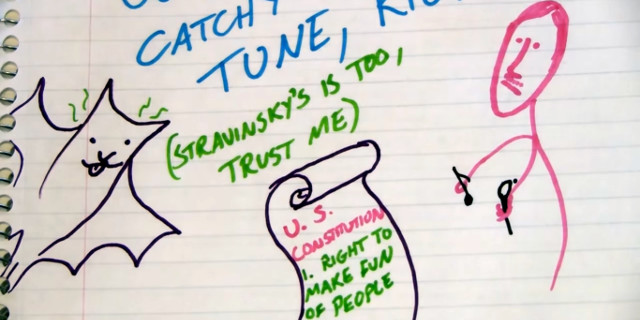The redoubtable Vi Hart produces a brilliant half-hour video on how Schoenberg‘s twelve-tone technique works, and a few examples that demonstrate just where half the background music of the twentieth century came from. Includes discourses on the nature of art, the nature of musical shapes and the reprehensibility of present copyright laws. You will enjoy this.


Dang, Schoenberg’s another one I should have mentioned! :-)
Fascinating video. Thanks.
Schoenberg might’ve won a significant part of the post-war era, but as soon as Philip Glass and John Williams came along, that was All. Over. Now it’s the unholy marriage of Glass, Danny Elfman, and punk, as background music gets simpler and simpler and simpler. Lots of it is just three simple arpeggiated chords over and over–played very sensitively, true, but that’s turd-polishing for you. In the wake of punk and minimalism, music is written with minimal effort or imagination because no one questions the idea that “simplest is best”. If less is more, then least is most and nothing is everything. It’s an idea we’ve become curiously “maximalist” about–the overriding cultural “irony” of our time.
Why does she keep associating the twelve-tone method with *Stravinsky*??